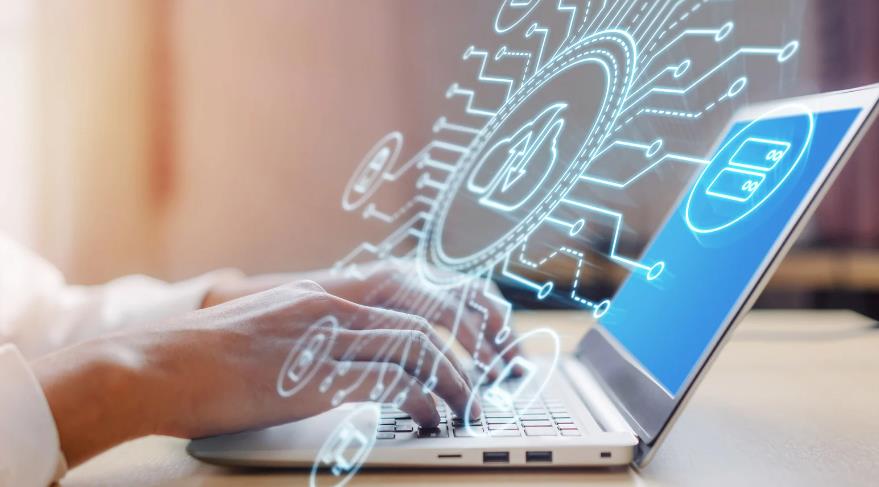The invention of hypermarkets made it easy for customers to buy from them. Unlike the traditional stores that give essential things lists and the shopkeeper brings the product, consumers can go inside and choose the products they like and buy. But did you notice that you walked into a store to buy a single product and walked out with a bag full of unexpected items? This impulse buying is done more by emotions than logic. So let us know more about this and the phases for mastering the mindful shopping experience. This will be the game changer for investors, business man and mainly for the consumers.
The Impulse Purchase Cycle
Impulse buying is not a single-time incident. Even if you get a mobile notification from a shopping app or get to know any new interesting discounts, you will buy even without thinking about its purpose. This process is happening in the seven phases. The final decision of yours to buy or not will depend on this. These stages range from the first moment you notice a product to the final decision.
The Psychology Behind Impulse Buying
The impulse buying is deeply rooted in human psychology. Humans have emotions, curiosity, and even fear (FOMO), just like a volcano. No one can predict what will happen the very next time. Retailers and marketing experts are very well-studied by their target consumers and continuously try to trigger those emotions. Recent studies have shown that this kind of impulse shopping generates the happy hormone dopamine and leads to addiction to such sudden shopping.
Now, let us explore the seven phases of this decision-making process with examples.
Phase 1: First Contact with the Product
This very first phase starts when you first notice a product. This is an initial contact that can happen in different ways. Maybe you watch an advertisement, flash sale, product your friend is using or review your favorite influencer.
Presentation is Key: You know that the first impression is the best. Like this, imagine you are walking into a store and saw a product displayed on a beautiful stand with lights. This presentation makes you more attractive than the product.
Example: You’re shopping for a new phone case and spot one on a stylish display next to other trendy tech accessories. The case isn’t on your shopping list, but the way it’s presented makes you curious to check it out. This curiosity is the first step in the impulse purchase cycle.
Phase 2: Intrigue and Emotional Appeal

After you notice that product and get attracted to it, the next step is building an emotional connection with it. This will depend on whether you go to the next phase or not. So this phase has an important part in the decision making process.
Evoking Emotion through Marketing: The marketers and advertisers will plan advertisements that trigger the audience. It can start with the beautiful cover sticker on the product to all the fancy advertisements. They also use certain words like limited edition, 50 off, etc.
Example: You saw a beautiful and comfortable sweater in your favorite color. You may be confused whether to buy it or not. Then you see the ad that says “must have for this season”. Your confusions will solve and suddenly plan to buy the same product.
Phase 3: Consideration of Product Value
In this stage, you are emotionally attached to the product and planning to buy it. This phase will be your thoughts about the benefits, cost, quality and purpose of it in your life.
Evaluating Beyond the Price; For buying a product, price is very important. You can also consider the price and quality is really important. This is called the unique selling points (USPs). You may have various questions running out at this time. Does it solve my needs and is it worth investing?
Example: The bargaining stage with the salesman comes in this stage. Sometimes you keep thinking about the quality of the product and is it worth it? If it is a sweater, you will recheck the fabric and think about how many times you will wear it. These careful considerations will stop you from impulse buying to an extent.
Phase 4: Internal Debate
Even if all the questions are ignored, this phase will be the tug of war between emotion and logic. You will be stuck by seeing the product on display and still dont think it will be useful or not.
Overcoming Desires or Not: Here some mindful people will realize that they are not supposed to buy this product this time and they don’t have the need for it. But if someone passes this phase by the influence of emotion, no one can stop them. Besides this, some people will really stop at this stage.
Example: You just think that you entered a hypermarket to buy some kitchen things. By searching for essential products, you saw a beautiful fan with strip lights on its wings. This is the main highlight of the display, and the ad says that it gives aesthetic cool to your rooms. First, you planned to buy it, and by strong, mindful thought, you concluded that all your rooms have fans and no need for new ones. On the other hand, if you are strongly influenced by the ad and conclude that you will not get this aesthetic beauty another time, because it is a limited edition. Then you will end up buying a fan instead of kitchen things.
Phase 5: Making the Decision to Purchase
In this phase, you will buy the product regardless of its use or price. Yes, in this stage, the final decision is made and can’t change at this stage.
Strategic Influence: They will be take this final decision because of the product may not get again in this less rate or this is limited edition. These things force the buyer to take decision faster. This urgency force them to take quick decisions and buy it.
Example: You decided to buy an expensive handbag that doesn’t have enough space to accommodate your necessities or even your mobile phone. The only thing you are attracted to is to style with your green gown for any upcoming marriage.
Phase 6: The Afterthoughts and Reflection

This purchase comes after the purchase. This phase can do nothing about the expense you spend or spoil the happiness you get while buying it.
Phase of Guilt: In this phase, you felt guilt, regret and doubt after making the purchase. You may realize the product is not necessary at this time and you wasted the money. Also you may thought the same product can bought from somewhere else instead of this.
Example: If you are ordered from a shopping site, you may return it by showing some simple issues. In stores also some people ask for return policies after purchase. These all can be seen in this phase.
Phase 7: Customer Satisfaction and Loyalty
This is the last phase of it. Here the cycle will get the long term success of any business. This is completely related to the customer satisfaction and overall shopping experience. If the customer is satisfied with what they got in price and quality, this will make them loyal to the brand.
The Experience: This can be positive or negative. The positive experience with customers can influence them to invest more in the brand and can make them regular customers of the brand. Also, the friendly staff (in the case of the store) and easy, user-friendly navigation(online shopping) will be extra add-ons. Customer service is very important in this phase.
Example: Assume that you bought an iPhone from a retailer shop. You can bring this from the iPhone store itself, but you choose the store for the friendly customer service and offers given for other things like phone back cover, charger and phone screen. This will make you feel happy and will buy all related products in future from the same shop.
The Role of Technology in Impulse Shopping
Technology has a crucial role in this impulse shopping. The easier buyer options are giving too many ways to buy products. Starting from the online payment methods, if you don’t have cash on pocket, you can just transfer online. Even if you still have the full amount in your account, instant EMI options are there.
When it comes to online shopping, with one click, you just order the product. If you enter to bring a shirt and the suggestions and advertisement would force you to buy pants, shoes, and a watch also. The algorithms also act as money eaters. They still record all the searches and wishes for giving advertisements and suggestions related to this.
The Economic Impact of Impulse Buying
To an extent, the impulse buying is positively affecting the economic impact. If the consumers and products increase, new inventions and a variety of businesses will start. This will help to boost the sales and market.
When it comes to affecting the buyer, it should not lead to financial strain or debt. If you are buying a product, you should buy it if it is necessary and have the money to spend.
Practical Tips to Manage Impulse Spending Habits
The management of impulse spending should start with proper awareness. You should recognize what makes you trigger to buy the products and work on it
-
Budget for Unplanned Expenses
You may have a fixed amount of savings and planned budget for the monthly expense. Like this you should plan for such unexpected things to buy. This will help you to set the goals in the budget and can stay away from spending excess.
-
The 24 Hour Rule
Like people say, if you get angry, count from 1 to 10. Emotions can be sudden, and doing anything about them will affect you. Giving a cool-off time will really work in such cases. So, if you get any impulse buying, just wait for 24 hours. Even after one day, you feel like you really want it? Then go for it.
Importance of Mindfulness in the Impulse Buying Cycle
Mindfulness is something that we all have to experience for peace and happiness. Like everyone says, mindful eating means just going for mindful shopping. You have to stay present and make thoughtful decisions. This method can surely prevent you from experiencing instant triggers and emotional responses.
Understanding this impulse purchase cycle and its phases can help you a lot to make more informed shopping decisions. Whenever you get such sudden triggers, do think about it and then take action. Whether you’re a consumer looking to control your spending or a business aiming to increase sales, recognizing these phases is important for you. .



